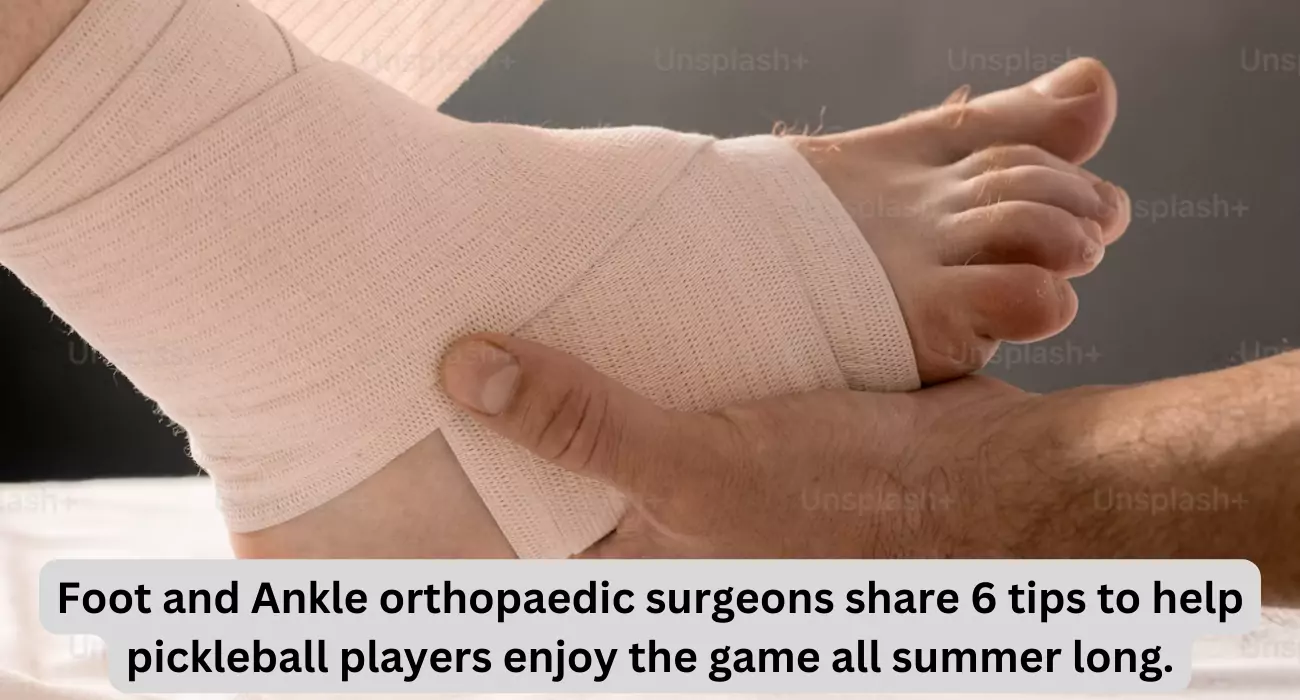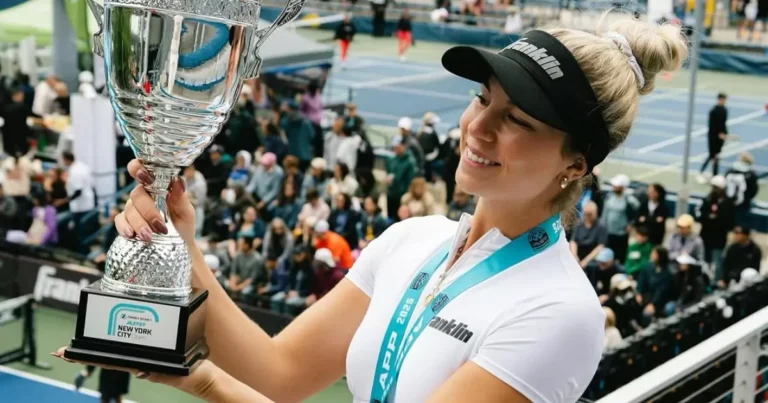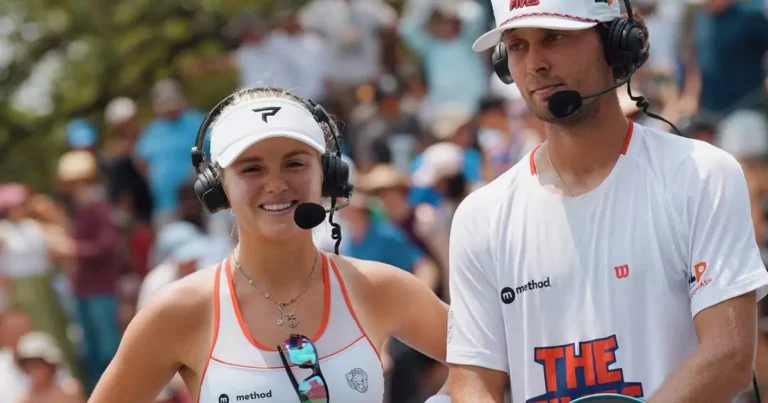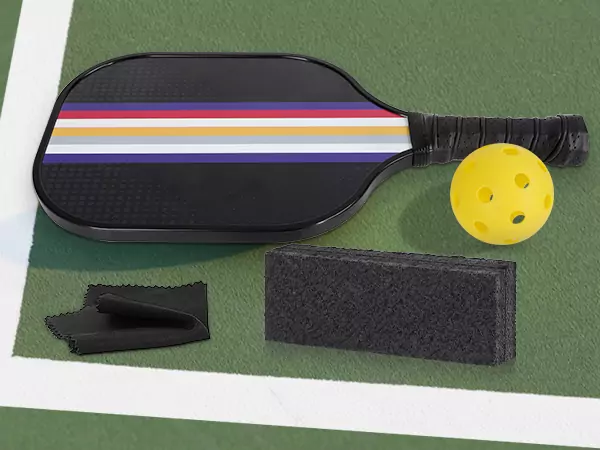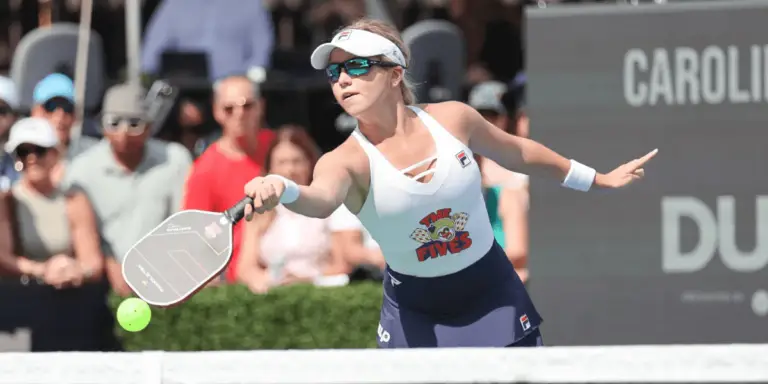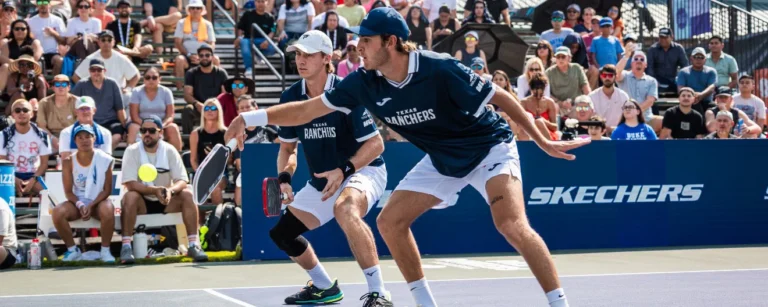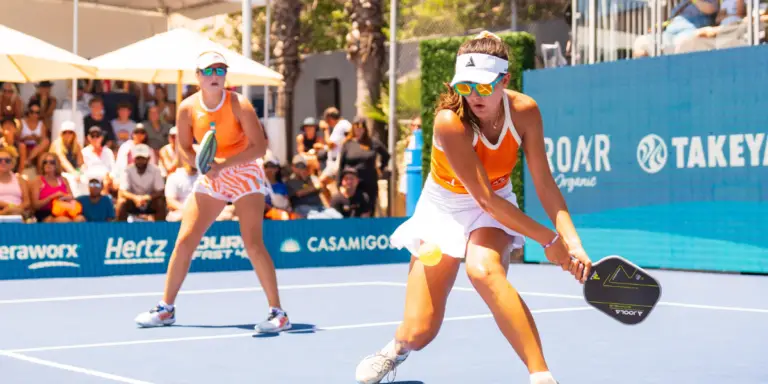As the weather warms up, more people are looking for ways to get outside and enjoy sports like pickleball, it’s essential to prioritize safety and take precautions to avoid injuries. While pickleball has gained immense popularity, foot, and ankle orthopaedic surgeons have noticed a concerning trend: an increase in pickleball-related injuries among players of all ages and skill levels.
Unfortunately, over the last couple of years, foot and ankle orthopaedic surgeons have seen an uptick of pickleball injuries in all ages, from experienced athletes to newcomers to the sport. Some of the more common injuries include ankle sprains, Achilles tendon ruptures, and ankle fractures. Pickleball can also aggravate pre-existing conditions like Achilles tendonitis and arthritis pain.
Table of Contents
Foot and ankle orthopaedic surgeons share 6 tips to help pickleball players enjoy the game all summer long.
1. Ease into the activity
According to Dr. Hui Zhang, a foot and ankle orthopaedic surgeon from Aurora Health Care in Milwaukee, Wisconsin, pickleball is an excellent way to get active and back in shape, thanks to its accessibility. However, he warns that a sudden transition from a sedentary lifestyle to a demanding sport like pickleball can lead to injuries, particularly Achilles tendon ruptures.
Dr. Zhang notes that Achilles tendon ruptures typically affect the back of the lower leg and are common among “weekend warriors” who abruptly switch from routine exercise to high-intensity activities like explosive movements on the court. To avoid this, Dr. Zhang recommends a gradual introduction to more rigorous exercise and activities.
His advice? “Don’t go from couch to pickleball court overnight! Warm up with stretching or a light jog before playing, and gradually increase your intensity and duration. This will help prevent injuries and ensure a safe and enjoyable experience on the court.” By following Dr. Zhang’s guidance, pickleball enthusiasts can enjoy the benefits of the sport while minimizing the risk of injury.
2. Stretch before and after play
Foot and ankle orthopaedic surgeons Dr. Alexis Dixon and Dr. Seth O’Donnell emphasize the importance of proper preparation and care when playing pickleball. According to Dr. Dixon, many players treat pickleball as a recreational activity rather than a sport, neglecting to stretch properly before a game, unlike they would for traditional racquet sports like tennis. However, pickleball requires similar motions, making calf stretches and balance exercises crucial.
Dr. O’Donnell agrees and adds that staying hydrated by drinking plenty of water before, during, and after play is essential. Additionally, cooling down after games is vital to maintain flexibility and aid the body in recovery. By prioritizing these simple measures, pickleball enthusiasts can reduce their risk of injury and enjoy the game to its fullest.
No posts
3. Wear appropriate shoes
Dr. O’Donnell highlights the crucial role of proper footwear in pickleball, emphasizing that “running shoes” may not be the ideal choice for the sport’s side-to-side movements. He recommends wearing shoes that are comfortable and broken in, but not worn out, and provide adequate support for the foot and ankle.
Pickleball, a bit similar to tennis, requires quick movements involving cutting back and forth, planting, and pivoting of the foot, to mitigate the risk of ankle sprains, Dr. O’Donnell suggests choosing shoes specifically designed to support “start and stop” sideways movements. This can significantly reduce the risk of ankle sprains and other injuries, allowing players to enjoy the game with confidence and safety. By wearing the right shoes, pickleball enthusiasts can protect their feet and ankles from unnecessary stress and strain, ensuring a fun and injury-free experience on the court.
4. Add variety to your exercise regimen
According to Dr. Mimi Wang, a foot and ankle orthopaedic surgeon from the University of Florida in Gainesville, it’s essential to maintain a well-rounded fitness routine that goes beyond pickleball. She advises incorporating other physical activities to enhance overall strength, endurance, and cardiovascular health, such as Pilates, Yoga, Walking, and Biking.
Dr. Wang also recommends a unique exercise to strengthen the ankle and improve coordination: writing the alphabet with both feet! This innovative activity can help improve flexibility, balance, and overall foot function, making it an excellent addition to a comprehensive fitness regimen. By diversifying your physical activities, you can reduce the risk of injury and enjoy a more robust and healthy lifestyle.
5. Let injuries heal before play
If you suffer an injury while playing pickleball, Dr. O’Donnell recommends a gradual return to the sport. While it’s understandable that players are eager to get back on the court as soon as possible, it’s essential to allow your body time to heal and recover.
“As we age, our bodies don’t bounce back as quickly as they used to,” Dr. O’Donnell notes. “Rushing back into play can lead to re-injury, which can keep you sidelined for even longer.”
Most pickleball injuries don’t require surgery, but they still require proper recovery time and possibly physical therapy to prevent further damage. By taking the time to heal and rehabilitate, you can minimize the risk of re-injury and ensure a safe and successful return to the sport you love.
6. Listen to your body
If you have a pre-existing injury, it’s crucial to address it with the same attention you would give to any sports injury, advises Dr. O’Donnell. For instance, if you’re prone to rolling your ankle, consider using a brace or support to provide stability.
Dr. O’Donnell emphasizes the importance of listening to your body and allowing injuries to heal before returning to the court. “Even if it’s just a minor issue or some soreness, give your body time to recover,” he advises.
If you experience a foot or ankle injury while playing pickleball, it’s recommended to consult a foot and ankle orthopaedic surgeon for proper treatment.
Remember, injuries can happen to anyone, even professional athletes, as Dr. Wang points out. “Don’t let the fear of injury hold you back from maintaining an active lifestyle. With proper care and treatment, you can get back to playing the sports you love.”
About Foot and Ankle Orthopaedic Surgeons
Foot and ankle orthopaedic surgeons are medical doctors (MD and DO) who specialize in the diagnosis and treatment of musculoskeletal disorders and injuries affecting the foot and ankle. After completing four years of medical school, they undergo five years of postgraduate residency training, followed by a fellowship year of specialized surgical training.
With their comprehensive education and training, these specialists are equipped to care for patients of all ages, providing a range of services including reconstructive surgery for deformities and arthritis, treatment of sports injuries, and management of foot and ankle trauma. Whether it’s a child with a congenital deformity, an athlete with a sports injury, or an adult with arthritis, foot and ankle orthopaedic surgeons are dedicated to helping patients achieve optimal foot and ankle health and function.
About the AOFAS
The American Orthopaedic Foot & Ankle Society (AOFAS) is a vibrant community of foot and ankle orthopaedic surgeons dedicated to enhancing patient care through education, research, and advocacy. As the global leader in foot and ankle care, AOFAS offers unparalleled events and resources for ongoing learning, supports groundbreaking research, and raises awareness among patients about foot and ankle conditions and treatments.
By fostering collaboration and excellence, AOFAS inspires its members to strive for ever-higher standards of professional performance, ultimately leading to better patient outcomes. To learn more, visit the American Orthopaedic Foot & Ankle Society website at aofas.org.
